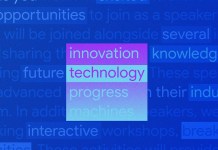NASA, in cooperation with IBM and research partners, introduced Surya – a new model of the Artificial Intelligence Foundation, designed for the analysis and forecasting of the Sun's activity. Trained on nine years of continuous data from the NASA sunny dynamics observatory, Surya shows how advanced AI can transform heliophysics and weather prediction in space.
Surya uses the architecture of the foundation model, which learns directly from raw solar data, and does not require wide labeling. Its design combines layers of spectral blocks with a long -term transformer spine, enabling it to detect both long -term solar cycles and short -term phenomena, such as sunny spots and flares.
Preliminary reference points indicate that Surya improves the accuracy of the forecasting of the sun's flame by up to 16 percent compared to previous models. It can generate visual forecasts two hours in advance and forecast the speed of solar wind to four days forward. These possibilities are provided by valuable tools for predicting weather events in space, which can affect satellites, energy networks, navigation systems and human space flight.
Surya was approved in four basic research tasks:
- Active forecasting of the appearance of the region-generation of 24-hour forecasts of new sunny regions.
- Sunny flare forecasting – estimating the probability of the main flares during the next day.
- Forecasting sun wind speed – forecasting the conditions of solar wind critical for satellites and mesh stability.
- EUV Spectra forecasting – mapping sun radiation to better understand its impact on the atmosphere of the Earth.
The versatility of the model emphasizes its potential not only for heliophysics, but also for other scientific fields. Its architecture and methodology can be adapted to planetary learning, land observation and more.
Surya was developed as part of the NASA and Advanced Concepts Team (IMPACT) in the Marshall Space Flight Center as part of the wider AI AI initiative for science. The project included NASA centers, IBM Research, Southwest Research Institute, Seti Institute and universities in the United States.
The required development required overcoming significant challenges, including memory restrictions and the need to combine frequencies with modeling of time ranks. By integrating the specialist knowledge of both AI engineers and heliophysics, the team created a model capable of learning minor spatial details, while capturing long -term time dynamics.
Both the Surya model and its training sets are available Hugging AND GirubEnsuring open access to researchers, teachers and students around the world. The training process was supported by the National Artificial Intelligence Research Resource Pilot, an initiative directed by the National Science Foundation, with computing infrastructure provided by NVIDIA and other partners.
In addition to the role in the development of Heliophysics, Surya also supports sustainable development by strengthening the resistance of technologies that undergo modern society. Accurate weather forecasts in space help protect renewable energy infrastructure, energy networks and global communication systems against sun disturbances, reducing the risk of expensive failures and environmental impact on the part of damaged equipment. In this way, solar forecasting based on AI indirectly contributes to the stability of energy networks and wider goals of green technology.
Surya is part of a wider AI “5+1” strategy, which aims to develop foundation models for each of the main fields of NASA science with a large language model to combine them. By embedding specialist scientific knowledge directly in advanced AI systems, NASA creates tools that accelerate discovery, improve forecasts and strengthen the risk resistance associated with weather in space.


















